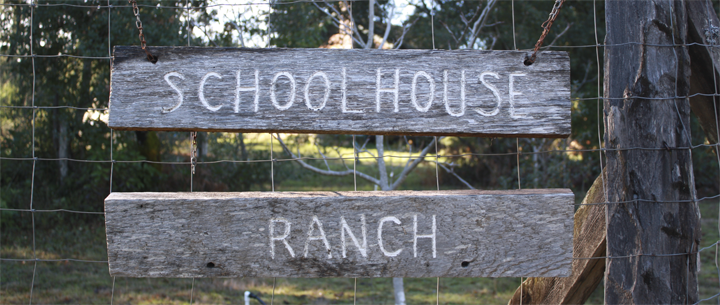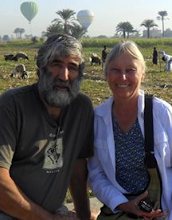This isn't our ship, but is much the same. There is a swimming pool top front, bar and seating toward the back. You can see other ships in the background.
Today we visited the Temple of Horus, the falcon-headed god of the sun and planets. It is the first temple we have seen that shows Greek influence and Roman and Christian defacement. At the lower levels, many of the faces are scratched out. The finials on the columns are all different , but still representing the papyrus flower or lotus.
In the first inner court, the walls on the left tell the story about the temple. The pharaoh asks his mother to intercede with the god Horus for permission to build a temple for him. Next scene is Horus followed by mother getting permission, then someone holding building stones - the architect? Then the pharaoh is shown pouring sand from an urn to start construction. Next scene is the building, then Horus is shown the finished temple. In the next scene he is kissing the pharaoh with exaggerated smooching lips. Very charming. Sort of like the first cartoon. One of the inner sanctums has the best preserved heirogyphs in Egypt. This room was used for mixing perfumes and the Egyptians believe the french deciphered the formulas and are still using them today. When this temple was discovered about 1863 there were many people living inside. Sand and rubble from centuries had accumulated so the level inside was much higher than today, and the once painted roof is blackened by the cooking fires. However, it is the best preserved antiquity because although occupied, it was not torn down.
Yesterday, we visited a perfume house and were given various oils to smell and told their uses, ie lotus flower oil to entice husbands, peppermint and eucalyptus oil to prevent snoring and get a good night's sleep, musk oil for dry skin and to remove dark circles from under the eyes. They were very strong oils and many people on the tour purchased a little box of 4. I was not one of them, as I really dislike strong perfumes and oils, but the lecture was enlightening and it was air conditioned and we were given our choice of drink: coffee, hibiscus or tea. These places are on every tour agenda when traveling in poorer countries, and they are hard to avoid.
We are cruising now toward Kom Boro where there is, you guessed it, another temple. But the good news is that we walk to it from our boat. It is on an island. We are heading south and it is hotter and more humid. We are passing farms, watching horses being washed, oxen being led to drink, children swimming. We passed a town with beautifully painted houses along the banks of the river. There are 9! of these cruise ships in front of us, and 2 behind us. Guess we won't have the temple to ourselves.
Temple of Kom Boro
That means pile of gold. The gold from Nubia came here first before going to other areas of Egypt. There were the usual massive columns. It was begun about 125 bce by the Egyptian Greeks and finished by the Romans about 320. It is badly damaged, but some interesting parts remain. There is a calendar showing what type of food to offer the gods each day of the 30 day month. A week was 10 days, there were 12 months in a year, with 5 days of festivals at the end of the year which weren't part of any month. There were 3 seasons: inundation, sowing seeds, & harvesting. An area behind the sanctuary was used as a medical clinic, and there are engravings of instruments used in surgery and childbirth.
 |
| Woman giving birth - see the baby under her? |
Since all the boats had just pulled in, it was very crowded and there were certain things every guide wanted to show their group. We waited patiently to see the calendar wall. There was an Egyptian, sort of a maitre de. He noted which group was next and told you when to go in. After Khaled explained what we were seeing, very briefly, he said now you can take photos. The next group barged in and interrupted us and many didn't get to take photos. Khaled was annoyed at such rude behavior. Next we went to see the medical drawings, once again waiting for the group in front to finish. Again, the same group came up and circled around us until they were in front. Khaled blew his top. Egyptians yelling in anger are a sight to see. The maitre d' spoke very calmly, but the point was made and the others slowly got behind us. It was great theatre.
 |
| Our guide Khaled beside Horus & Isis |
 |
| Temple Calendar |
Now for the ugly facts about Nile cruising. There are 350 of these boats. All effluent goes into the Nile. I wonder how long the river can take this much pollution. The air of the river is also fouled by the diesel engines of the boats. All in the name of tourism. If you want to see Egypt, I don't think this river, which has survived so many thousands of years can survive tourism without some kind of sewage regulation. And now it's 6:20 and I hear the call of the muezzins - which has a calming effect.








No comments:
Post a Comment